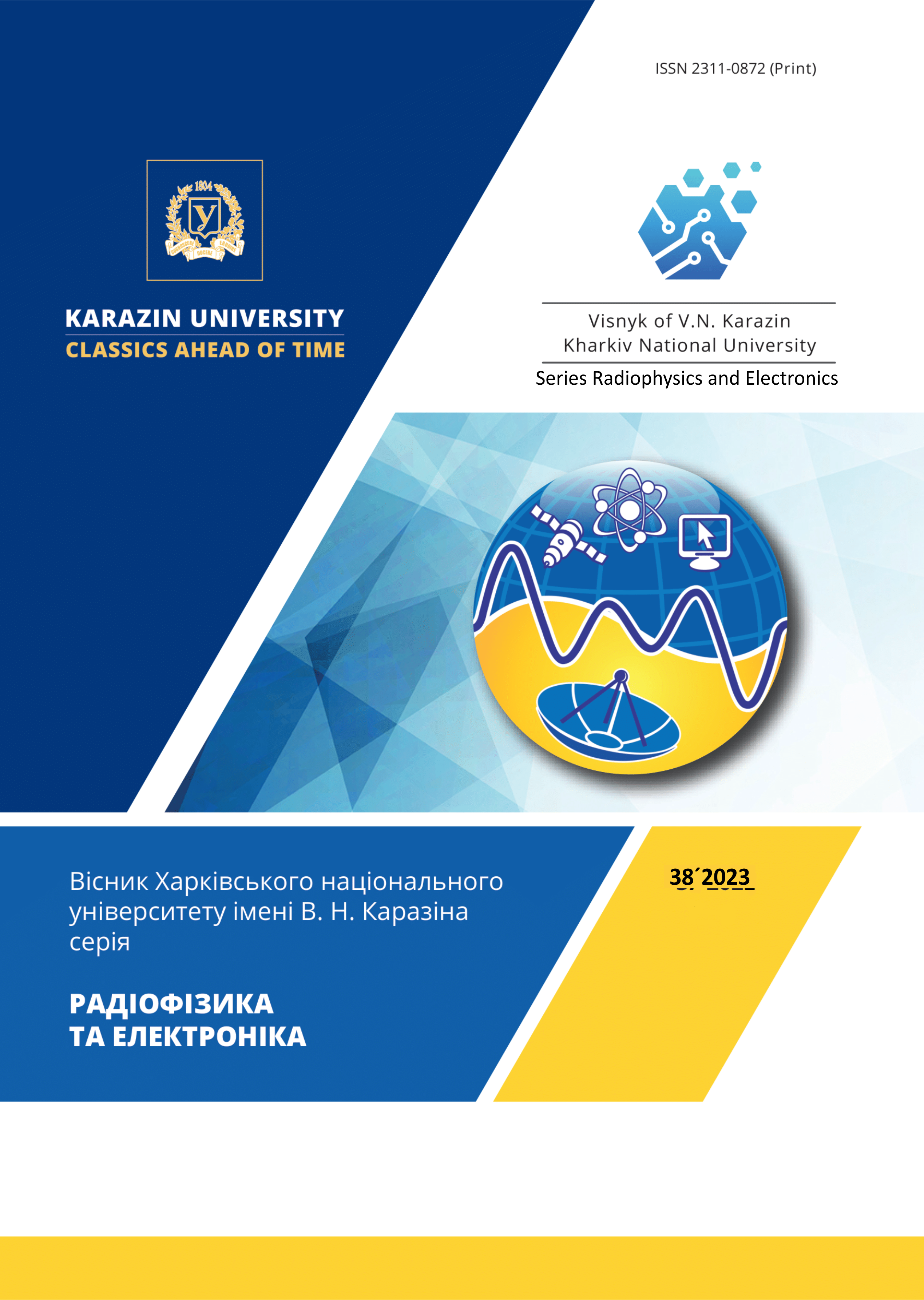Wideband bandstop filter based on quasi-fractal structure
Abstract
Relevance. The creation of new high-performance designs of broadband frequency-selective devices is one of the priority tasks in modern microwave technology. This is due to the requirements both for the multifunctionality of devices and the solution of the problem of electromagnetic compatibility. An essential role in a number of frequency-selective devices is played by band-stop filters (or rejection filters), which ensure stable operation of devices under the influence of blocking, noise and other spurious signals. At the same time, it is necessary to search for new approaches to design, the use of new basic elements.
The purpose of the work is to do numerical simulation of the characteristics of a band-stop filter based on a quasi-fractal microstrip structure, optimization of the filter parameters, establishment of critical parameters that affect the amplitude-frequency characteristic of the filter.
Materials and methods. Numerical simulation was carried out within the framework of the finite element method (FEM) using the Ansoft HFSS package.
Results. Numerical modeling of the amplitude-frequency characteristics of a broadband bandstop filter based on a quasi-fractal microstrip structure has been carried out. Modeling of the current distribution structure on microstrip conductors has been carried out. The factor of influence of the electrical length of the filter elements on the characteristic resistance of individual filter branches is established. By optimizing the electrical length of the filter elements, the possibility of suppressing parasitic resonances in the structure is shown. High levels of signal rejection were achieved in a sufficiently wide frequency band.
Conclusion. The proposed design of a bandstop filter based on a quasi-fractal microstrip structure provides signal rejection in 72.3% of the frequency band relative to the center frequency of the operating band. At individual frequencies, practically unattainable levels of rejection are realized when designing similar filters based on coupled microstrip resonators. The design of a bandstop filter based on a quasi-fractal structure has undeniable advantages over traditional designs of frequency-selective devices based on coupled microstrip resonators - this is compactness and ease of adjusting critical parameters with comparable values of other electrodynamic parameters. In addition, in comparison with classical filter designs based on coupled resonators, the stage of multi-stage correction of either the mutual coupling of the resonators or their electrical length is eliminated.
Downloads
References
Minnis BJ. Printed Circuit Coupled Line Filters for Bandwidth Up to and Greater than an Octave. IEEE Trans. MTT. 1981; 29 (3): 215-222. https://doi.org/10.1109/TMTT.1981.1130330
Hong J-S, Lancaster MJ. Coupling of Microstrip Square Open-Loop resonators for Cross-Coupled Planar Microwave Filters. IEEE Trans. MTT. 1996; 44 (12): 2099-2109. https://doi.org/10.1109/22.543968
Bancui MG, Ramer R, Ioachim A. Microstrip Filters Using New Compact Resonators. Electronics Letters. 2002; 38: 228-229. https://doi.org/10.1049/el:20020174
Kim Т, Seo С. A Novel Photonic Bandgap Structure for Low-Pass Filter or Wide Stopband. IEEE Microwave Guided Wave Letters. 2000; 10 (1): 13-15. https://doi.org/10.1109/75.842072
Belyaev BA, Serzhantov AM, Tyurnev VV, Bal'va YF, Leksikov AA, Galeev RG. Implementation of cross couplings in microwave bandpass filters. Microwave and optical technology letters. 2014; 9: 2021-2025. https://doi.org/10.1002/mop.28507
Belyaev BA, Serzhantov AM, Tyurnev VV. A dual-mode split microstrip resonator and its application in frequency selective devices . Microwave and optical technology letters. 2013; 9: P. 2186-2190. https://doi.org/10.1002/mop.27806
Stefanini R, Chatras M, Blondy PG, Rebeiz M. Compact 2-pole and 4-pole 2.4-2.8 Ghz dual-mode tunable filters. IEEE MTT-S International Microwave Symposium Digest (MTT). 2010: 1480-1483. https://doi.org/10.1109/MWSYM.2010.5514807
Joshi H, Sigmarsson HH, Moon Sungwook, Peroulis D, Chappell WJ. High Q narrow-band tunable filters with controllable bandwidth. IEEE MTT-S International Microwave Symposium Digest. 2009: 629-632. https://doi.org/10.1109/MWSYM.2009.5165775
Morgan MA. Reflectionless Filters. In: Artech House Microwave Library. Boston; L. 2017: 258 p.
West BJ, Bologna M, Grigolini P. Physics of Fractal Operators. N. Y.: Springer-Verlag. 2003: 354 p.
Jaggard DL. Fractal Electrodynamics and Modeling. In: Directions in Electromagnetic Wave Modeling . Ed. by H. L. Bertoni and L. B. Felsen. N.Y.: Plenum. 1991: 435 – 446.
Levy R. Derivation of Equivalent Circuits of Microwave Structures Using Numerical Techniques. IEEE Ttran. on MTT. 1999; 47 (9): 1688-1695. https://doi.org/10.1109/22.788610
Ansoft HFSS /ANSYS Academic Research HF (5 tasks): 1 task(s) Permanent with TECS expiring 01-may-2020 Customer # 1076710.




